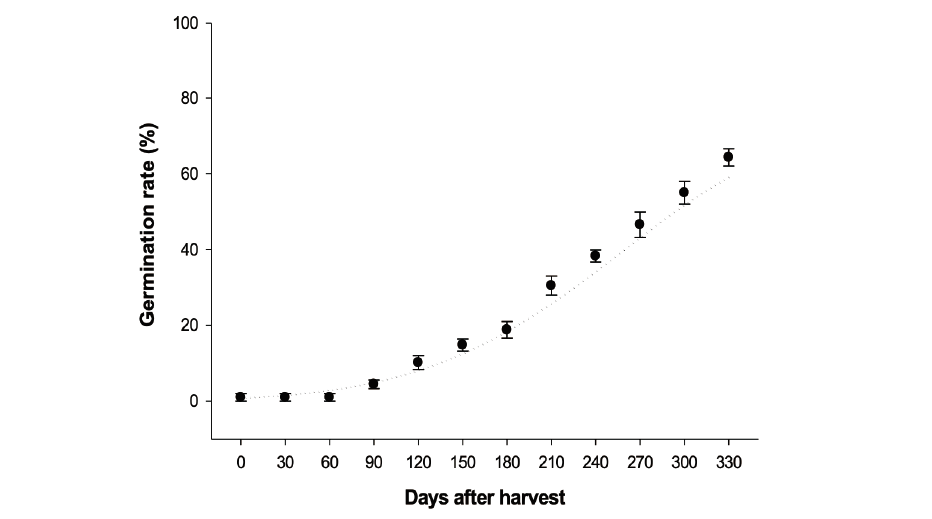Abstract
The effect of environmental factors on the growth of giant ragweed (
Figures & Tables

Fig. 1. Changes in germination rate of seeds after harvest. Seeds were stored at 25℃ until use for the experiment. The vertical bars represent the standard error of the mean.


